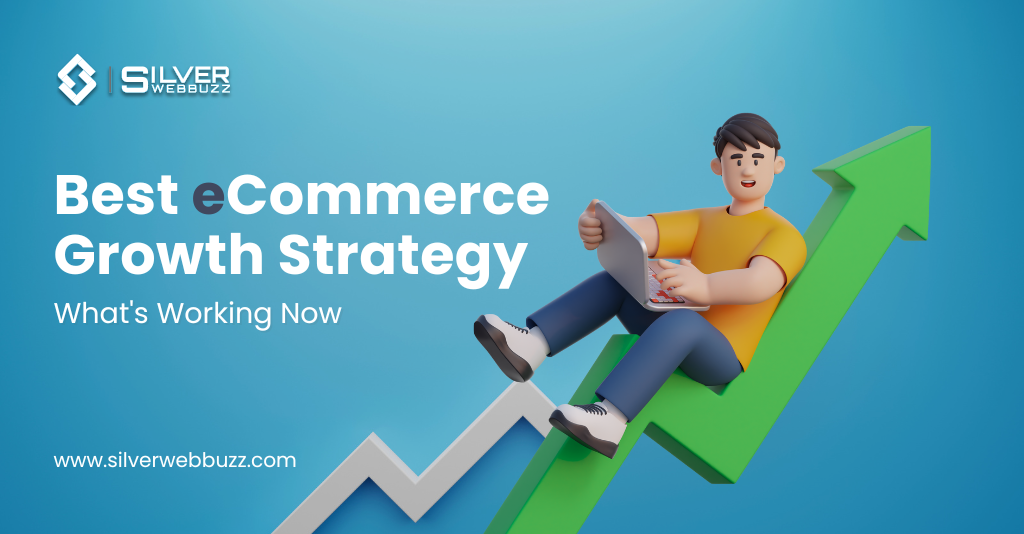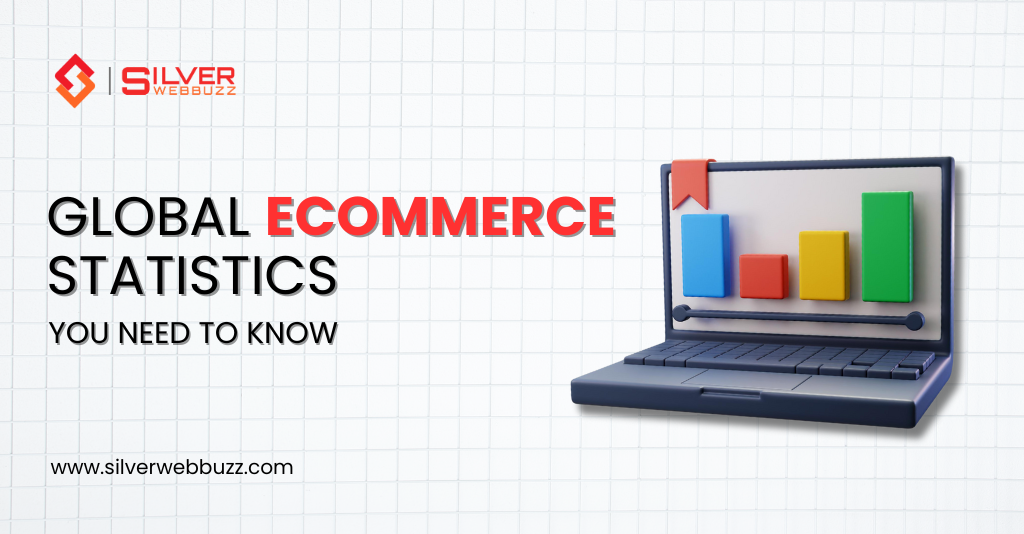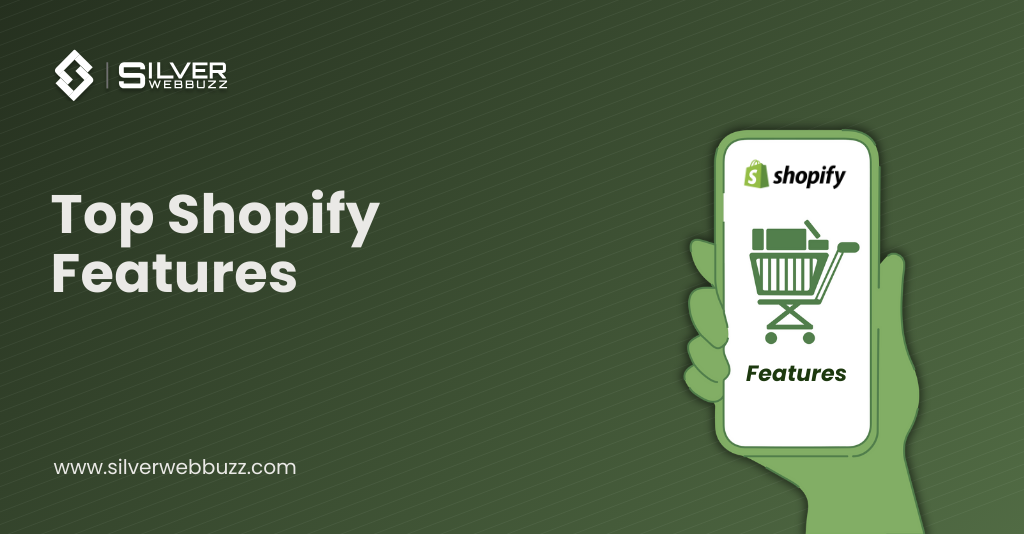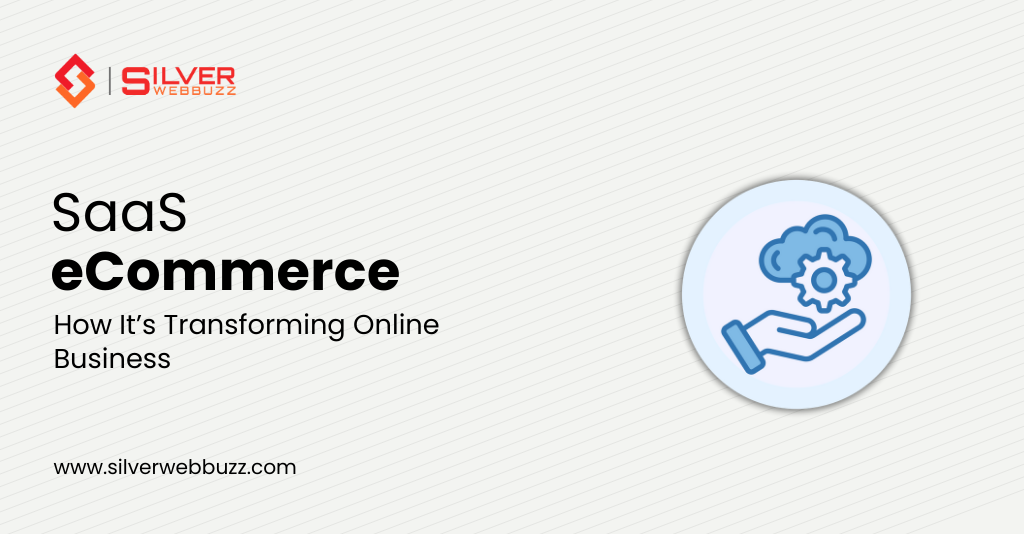The eCommerce industry has experienced explosive growth over the past decade. What started as simple online stores has evolved into sophisticated ecosystems powered by artificial intelligence, omnichannel experiences, and data-driven strategies. In 2025, the game is changing yet again, driven by new technologies, rising customer expectations, and increasing global connectivity.
Why is 2025 such a pivotal year for eCommerce growth? For starters, digital consumer behavior has reached an all-time high. With mobile-first shopping, influencer-driven marketing, and AI personalization becoming standard, eCommerce brands must rethink their ecommerce growth strategy to stay relevant and profitable.
Key trends like voice search, sustainable commerce, and headless commerce architecture are shaping the future of how consumers shop online. This article dives deep into the ecommerce growth strategies that are working in 2025 and explores how businesses can implement them to increase ecommerce sales and build sustainable, long-term success.
Whether you’re a startup or a seasoned brand, understanding the right ecommerce strategy is crucial to navigating today’s competitive environment. Let’s unlock scalable ecommerce growth tactics together.
What is eCommerce Growth?
When we talk about eCommerce growth, it’s important to look beyond just revenue numbers. True ecommerce growth includes customer experience (CX), loyalty, retention, average order value (AOV), and long-term brand equity. A smart ecommerce growth strategy focuses on every stage of the customer journey.
Growth vs. Scaling:
- Growth involves increasing resources (staff, tech, marketing) to drive results.
- Scaling means growing revenue faster than expenses, using smarter systems and automation.
Key Metrics to Measure eCommerce Growth in 2025:
- AOV (Average Order Value): Measure the average spend per customer.
- CAC (Customer Acquisition Cost): Determine how much it costs to acquire one customer.
- CLV (Customer Lifetime Value): Understand how much revenue one customer brings over time.
- Churn Rate: Track how many customers stop buying from you.
- Conversion Rate: Measure the percentage of visitors that complete a purchase.
Every successful ecommerce growth program tracks these metrics and tailors strategies accordingly.
Why a Solid Growth Strategy Matters in eCommerce
The eCommerce industry is more competitive than ever. In a world where anyone can launch a Shopify store overnight, standing out requires more than a pretty website. A robust ecommerce growth strategy helps your brand navigate challenges like saturation and acquisition costs.
Key Reasons a Growth Strategy is Essential:
- Increased Competition: New eCommerce businesses launch daily. Without a strategy, it’s easy to get lost.
- Higher CAC: Ads are more expensive and less effective due to saturation and ad fatigue.
- Tech-Driven Innovation: Shoppers now expect personalization, same-day delivery, and seamless mobile UX.
Failure Case Example:
Zalando, a once-popular online fashion retailer, had failed to adopt AI personalization and mobile optimization. As competitors offered better UX and loyalty programs, their sales plummeted. They relied solely on paid ads without focusing on retention or CX, eventually leading to their closure.
Types of eCommerce Growth
There isn’t a one-size-fits-all approach to Digital growth strategies. Brands must decide how to grow based on their strengths, goals, and audience. Choosing the right ecommerce strategy is essential for long-term success. Here are the main types of growth that brands can include in their ecommerce growth program:
1. Organic vs Paid Growth
- Organic Growth: Comes from SEO, content marketing, email campaigns, and social sharing. These are core components of most digital growth strategies. Organic traffic is cost-effective and sustainable over time, although results may be slower to appear.
- Paid Growth: Involves PPC advertising, influencer marketing, and retargeting campaigns. These tactics deliver quick results but require budget discipline and an efficient conversion funnel.
A balanced digital growth strategies integrates both organic and paid methods to ensure steady traffic, higher conversions, and long-term profitability.
2. Horizontal Growth
Horizontal growth involves launching new product categories or entering adjacent markets to diversify your offerings. For example, a brand known for skincare products might expand into wellness or body care lines. This type of expansion can attract new customer segments while enhancing brand recognition.
Incorporating horizontal expansion into your overall business development model helps reduce dependency on a single revenue stream. It’s an effective move for brands aiming to evolve while maintaining relevance in a competitive landscape.
3. Vertical Growth
Vertical growth is all about deepening your presence in your existing niche. It may include strategies like offering subscription options, bundling complementary products, or launching premium versions of your current offerings. This not only increases the average order value but also builds customer loyalty.
By strengthening your current catalog rather than expanding into new territories, vertical growth enables brands to maximize value from their existing customer base.
4. Strategic Partnerships
Forming alliances with complementary businesses, marketplaces, or creators can unlock access to new audiences. For instance, working with influencers or participating in affiliate programs can accelerate brand awareness without starting from scratch.
Partnerships with established players—whether on Amazon, Etsy, or social media—can bring instant credibility. It’s a smart move for brands looking to grow reach and sales through collaboration rather than solo expansion.
5. International Expansion
Going global is easier than ever thanks to modern platforms that support multiple currencies, languages, and localized logistics. Tapping into international markets allows you to unlock massive growth potential. However, it also requires an understanding of regional preferences, regulations, and buyer behavior.
Brands that successfully localize their offerings—such as by adjusting marketing messages or providing native-language customer support—are more likely to succeed on a global scale.
15 Best eCommerce Growth Strategies Working in 2025
1. AI-Powered Personalization

In 2025, Artificial Intelligence (AI) has evolved beyond basic product recommendations. AI now plays a central role in shaping the entire customer journey—from homepage experience to checkout flow.
By analyzing real-time customer behavior, past purchases, location, browsing habits, and even social signals, AI delivers hyper-personalized shopping experiences that feel tailor-made.
Key Applications:
- Dynamic homepages that adapt to each visitor’s preferences
- Product suggestions based on mood, time of day, or season
- Predictive search that offers accurate results within seconds
- AI chatbots that guide shoppers based on intent
Top Tools in 2025:
Adobe Sensei, Dynamic Yield, Algolia Recommend
Growth Impact:
- 20–30% increase in Average Order Value (AOV)
- Reduced bounce rates through contextual engagement
- Boosted conversion rates with real-time personalized CTAs
2. Omnichannel Retailing

Modern consumers switch between devices and channels effortlessly. They might discover a product on Instagram, check reviews on desktop, and complete the purchase in-store or via mobile. In 2025, brands must seamlessly integrate digital and physical touchpoints to create a frictionless customer experience. And improve the ecommerce growth strategies.
Key Strategies:
- Unified customer profiles across platforms
- Real-time inventory sync between physical stores and online
- Cross-channel promotions and loyalty points
- Buy-online-pickup-in-store (BOPIS) & curbside pickups
Benefits:
- Enhanced customer trust and convenience
- Higher retention due to consistent engagement
- Increased CLV through a connected brand experience
Tools to Leverage:
Salesforce Commerce Cloud, Shopify Plus, Magento Headless Commerce
3. Social Commerce & Influencer Marketing

In 2025, social commerce isn’t just an optional channel—it’s the new storefront. With platforms like Instagram Checkout, TikTok Shops, and Facebook Marketplace allowing direct purchases, consumers are buying as they scroll, and enhance the ecommerce growth tactics.
Why It Works:
- Immediate buying triggers driven by emotional and visual appeal
- Short-form videos, reels, and stories act as immersive ad formats
- Influencer trust boosts conversion, especially with Gen Z and millennials
Pro Tips:
- Partner with micro and nano influencers for higher engagement and lower cost
- Use UGC (user-generated content) to build authenticity
- Host live shopping events for product launches or seasonal sales
Growth Tools:
Bambuser (live shopping), Linqia, Upfluence, TikTok Creator Marketplace
4. Voice & Visual Search Optimization
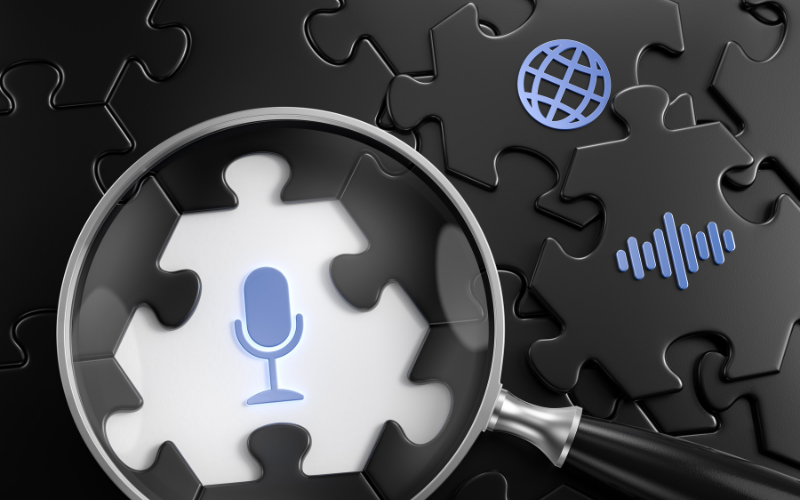
Consumers are increasingly using voice commands and image-based search to find products. Whether it’s “Hey Alexa, show me trending sneakers” or uploading a photo to Google Lens, search intent is becoming more intuitive and faster. And improve the ecommerce growth tactics.
Implementation Tactics:
- Use natural language keywords for voice search optimization
- Add structured data (Schema markup) for better SERP visibility
- Optimize images with ALT text, image sitemaps, and compressed formats
- Enable visual-first search filters like color, size, and shape
Growth Advantages:
- Captures high-intent traffic
- Enhances UX for mobile and voice-first users
- Improves organic rankings and discoverability
Platforms to Use:
Cloudinary, Google Lens, Amazon Alexa Skills Kit, SiriKit
5. Subscription & Loyalty Programs

Subscriptions and loyalty rewards are among the most effective tools for retention and repeat revenue in ecommerce. They reduce customer acquisition costs and boost lifetime value with minimal effort.
Winning Models in 2025:
- Curated subscription boxes (beauty, fitness, gourmet foods)
- Tiered loyalty programs with rewards, early access, or free shipping
- Gamification elements like spin-to-win, milestone badges, and exclusive drops
Example Strategies:
- Offer a discount on the first subscription cycle
- Create referral bonuses for loyal members
- Send personalized birthday or anniversary offers
Best Tools in Market:
Recharge, Bold Subscriptions, Smile.io, Yotpo Loyalty
Business Impact:
- Improves CLV by 30–60%
- Reduces churn through habitual buying behavior
- Strengthens brand-consumer emotional connection
6. Conversion Rate Optimization (CRO)

CRO in 2025 is not just about tweaking buttons—it’s a data-driven, customer-centric science. Every step of the funnel is tested and optimized to eliminate friction and enhance confidence in purchasing.
Essential CRO Tactics:
- Smart exit-intent popups with incentives
- Urgency tactics like real-time stock counters and countdown timers
- Interactive product demos and AR try-ons
- Seamless checkout experiences with one-click payments
Ongoing Strategy:
- Run regular A/B tests on product pages, checkout flows, and CTAs
- Leverage heatmaps and scroll maps to study user behavior
- Personalize CTAs based on returning vs. new users
Top CRO Tools:
VWO, Optimizely, Hotjar, Google Optimize
Outcomes to Expect:
- Lower cart abandonment rates
- Improved customer satisfaction
- Higher overall website ROI
7. Mobile-First Experience
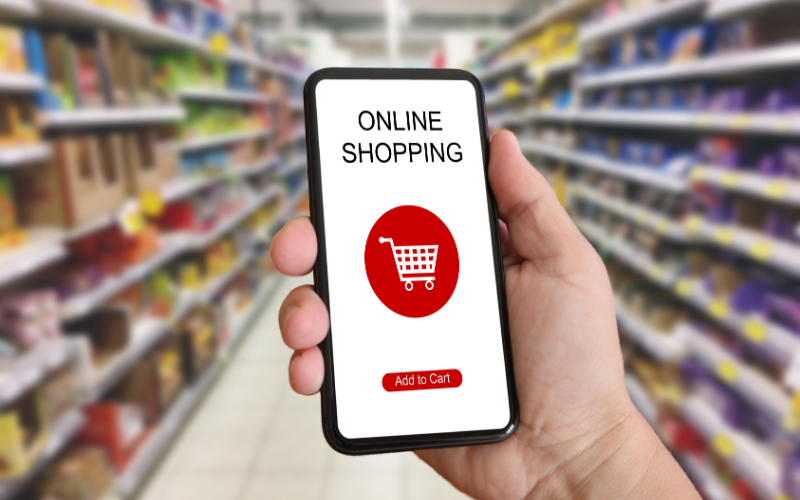
With over 70% of ecommerce growth strategy and transactions now happening via mobile, brands must prioritize mobile optimization not as a secondary effort, but as a foundational design principle.
Design Must-Haves:
- Responsive design that adapts fluidly to all screen sizes
- Intuitive mobile navigation with sticky CTAs
- Lightning-fast loading speeds (<2 seconds)
- Biometric logins (Face ID, Touch ID) for faster access
- Mobile wallets (Apple Pay, Google Pay, UPI) for seamless checkout
Pro-Tip:
Test your site using Google’s Mobile-Friendly Test and audit your Core Web Vitals to improve speed and interactivity.
Best-in-Class Mobile Features:
- Product videos optimized for vertical viewing
- Mobile-first chat support (WhatsApp, Messenger)
- AR-enabled previews (e.g., furniture, clothing try-ons)
Mobile Tools:
AMP by Google, Shogun Mobile Builder, PageSpeed Insights
Growth Metrics Improved:
- Reduced bounce rate on mobile
- Improved conversion rate
- Longer session duration
8. Zero & First-Party Data Strategy

With the decline of third-party cookies and increasing data privacy regulations, 2025 is the year of zero-party and first-party data. Brands are focusing on building direct, transparent relationships with customers by collecting data willingly shared by users—offering trust, relevance, and personalization.
How to Implement:
- Use quizzes, polls, surveys, and interactive forms to gather preferences
- Collect data from reviews, wishlists, and on-site behavior
- Offer value exchanges like discounts or early access in return for insights
Growth Benefits:
- Increased customer loyalty through privacy-first practices
- More accurate personalization and targeted marketing
- Compliance with data regulations like GDPR, CCPA
Recommended Tools:
Typeform, Jebbit, Klaviyo CDP, Google Tag Manager (First-Party)
9. Sustainable & Ethical Commerce
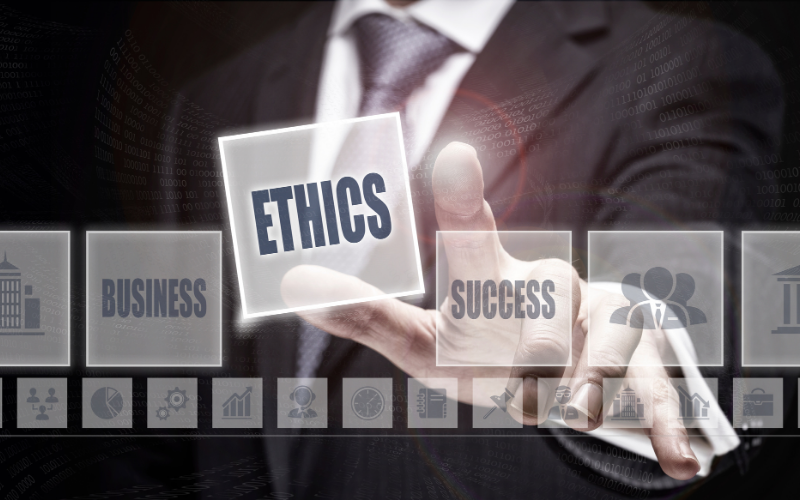
In 2025, conscious consumerism drives buying decisions. Customers want to support brands that align with their values. Sustainability is not just a PR move—it’s a growth engine when backed with authenticity and innovation.
Effective Tactics:
- Adopt eco-friendly packaging and carbon-neutral delivery options
- Share your brand’s sustainability journey with transparency
- Highlight initiatives like ethical sourcing, fair labor practices, or recycling programs
How It Grows Your Brand:
- Builds emotional connections and customer trust
- Justifies premium pricing through ethical branding
- Expands reach among Gen Z and millennial buyers
Top Examples:
Patagonia, Allbirds, Thrive Market
10. Dynamic Pricing & Smart Inventory

In a competitive digital marketplace, AI-powered pricing engines help you stay ahead by automatically adjusting prices based on demand, competitor pricing, and inventory levels—maximizing margins and sales velocity.
Key Applications:
- Real-time price optimization for seasonal or trending products
- AI-backed inventory forecasting to prevent overstock or stockouts
- Bundled pricing and smart discounts for slow-moving items
Growth Impact:
- Improves cash flow and inventory turnover
- Enhances profitability by capitalizing on demand peaks
- Reduces manual errors and over-discounting
Smart Tools to Use:
Prisync, Informed.co, Zebra Analytics, NetSuite Inventory Management
11. Cross-Border eCommerce
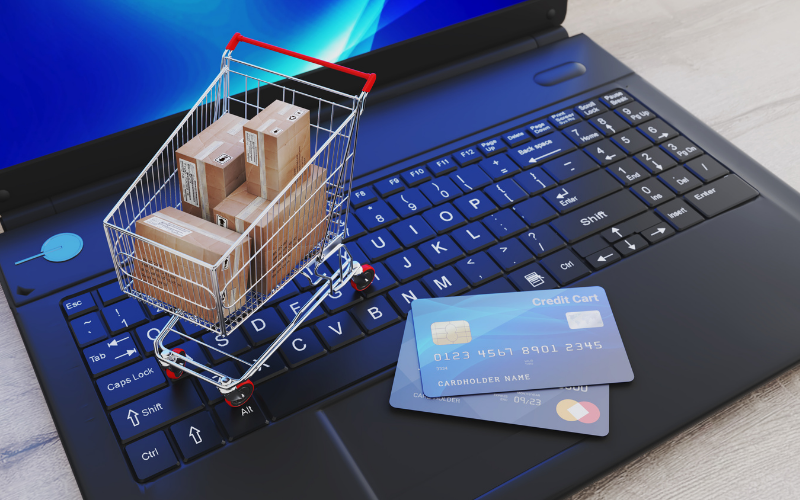
Expanding beyond borders is easier than ever with modern localization tools. Cross-border ecommerce allows brands to tap into international demand without building physical stores, unlocking huge revenue potential.
Success Tactics:
- Offer multi-language support and localized product descriptions
- Accept local payment methods and multi-currency checkouts
- Partner with global logistics for timely fulfillment and transparent delivery
Growth Wins:
- Scales your revenue without increasing domestic competition
- Builds global brand visibility and loyalty
- Reduces reliance on saturated local markets
Tools to Leverage:
Shopify Markets, Payoneer, Zonos, Easyship
12. AI-Powered Customer Service

AI is transforming support from reactive to proactive. AI chatbots, voice assistants, and machine learning-based help desks handle customer interactions 24/7—reducing operational load while increasing satisfaction.
Top Capabilities:
- Instant support for FAQs, order tracking, returns, and product queries
- Sentiment analysis to escalate urgent cases
- Proactive messaging based on user behavior or delays
Benefits to Growth:
- Increases retention through faster resolution
- Saves costs on support staffing
- Collects data to improve future customer experiences
Best AI Tools in 2025:
Zendesk AI, Tidio, Freshchat, Intercom Fin AI
13. Creator & Affiliate Economy Expansion

The creator economy is exploding in 2025. Consumers trust individuals more than brands, making affiliate partnerships and creator collaborations a scalable revenue model.
Effective Growth Actions:
- Partner with creators using Shopify Collabs or Amazon Influencer Program
- Launch referral programs for customers and influencers
- Empower creators to build co-branded collections or limited-time promotions
Growth Outcomes:
- High ROI with low upfront costs
- Builds authentic brand storytelling and niche audience access
- Scales reach without investing in traditional ads
Leading Platforms:
Impact.com, Refersion, LTK, Shopify Collabs
14. AR/VR Product Try-Ons

Augmented Reality (AR) and Virtual Reality (VR) revolutionize product visualization by allowing customers to interact with products digitally before purchasing. These experiences are proven to boost engagement and reduce returns.
Top Use Cases:
- Virtual try-ons for apparel, accessories, or eyewear
- AR furniture placement in home spaces
- VR showrooms for luxury or immersive categories
Growth Benefits:
- Increases buyer confidence and satisfaction
- Reduces return rates by providing “try-before-you-buy”
- Boosts time-on-site and brand recall
Top Tools for AR/VR in 2025:
Shopify AR, Snap AR, IKEA Place, Threekit
15. Headless Commerce & API-First Development

Headless commerce growth strategy gives developers full control to build fast, customized, and scalable ecommerce storefronts while keeping the backend commerce engine intact. In 2025, API-first infrastructure empowers innovation without limits.
Why It Works:
- Enables ultra-fast, mobile-optimized experiences
- Allows personalized UIs for different devices and regions
- Integrates easily with third-party tools and platforms
Perfect For:
- Brands targeting multiple markets with different UX needs
- Businesses needing scalable architecture for growth
- Enterprises experimenting with voice, AR, VR, or IoT channels
Headless Platforms in Use:
Commerce Layer, BigCommerce Headless, Shopify Hydrogen, Contentful
Growth Wins:
- Future-proof tech stack for long-term innovation
- Enhanced performance and SEO
- Greater agility in launching campaigns or features
How to Choose the Right Strategy for Your Brand
With so many cutting-edge strategies available in 2025, selecting the right ecommerce growth strategy can feel overwhelming. The key lies in aligning your approach with your brand’s maturity, audience expectations, and market positioning. Here’s a framework to help you decide what works best:
Understand Your Audience & Niche
Start by deeply analyzing your customer segments—what channels they use, what triggers their purchases, and how they interact with your brand. Use insights from first-party data, heatmaps, and customer feedback to map out where the friction lies and what experiences they crave. This helps in selecting ecommerce growth strategies that are audience-centric and high-converting.
Budget vs ROI Consideration
Not every ecommerce strategy requires heavy investment. Some strategies—like email automation or CRO—can be high-impact with low cost, while others, like AR/VR or headless commerce, may demand a larger tech budget but offer long-term scalability. Evaluate strategies not just by cost, but by their potential ROI over 6–12 months to ensure you’re investing in the right ecommerce growth strategies.
Balance Long-Term Growth with Quick Wins
Quick wins such as running influencer campaigns, launching referral programs, or optimizing product pages for SEO can offer fast returns. However, combining them with long-term strategies like omnichannel retailing or dynamic pricing ensures that your brand stays competitive and future-ready with a well-rounded ecommerce growth strategy.
Test, Measure, Iterate
No single ecommerce growth strategy guarantees success. Implement A/B testing, track performance using analytics tools, and be prepared to pivot based on results. Growth is a continuous loop of experimentation and adaptation, and the most effective ecommerce strategy evolves through data-driven decision-making.
Key Tools & Platforms Powering Growth in 2025
Technology is the backbone of modern eCommerce growth. Here are the most powerful tools and platforms that leading brands are using to scale in 2025:
eCommerce Platforms
- Shopify Plus – Scalable, customizable, and backed by robust app ecosystems (ideal for those using a Shopify development company)
- BigCommerce – API-driven flexibility with native B2B features
- Headless CMS (like Contentful or Sanity) – Allows brands to decouple backend and frontend, offering creative freedom and speed
Marketing & Optimization Tools
- Klaviyo – Advanced email and SMS marketing automation powered by AI
- Attentive – Personalized text marketing to drive engagement
- Hotjar – Heatmaps and behavior analytics for deeper UX insights
- Segment – Customer data platform that unifies data from every touchpoint
- Rebuy – Personalization engine for cross-selling, upselling, and smart bundles
AR/VR Experiences
- Threekit – 3D and AR product visualizations
- Shopify AR – Native AR for mobile shopping
- Snap Lens Studio – Builds immersive, shoppable AR experiences on Snapchat
Together, these tools help brands enhance customer experience, increase conversions, and manage operations more efficiently.
Challenges to eCommerce Growth in 2025
While the tools and strategies for growth are more powerful than ever, brands also face a new wave of challenges that can hinder progress. Understanding these obstacles is critical to building a resilient ecommerce growth strategy.
Market Saturation & Ad Fatigue
With nearly every niche becoming competitive, customer attention is harder to capture. Paid ads on platforms like Meta and Google are facing decreasing ROI due to overcrowded spaces and repetitive messaging. Brands need to lean into content marketing, community-building, and authentic storytelling to build a more sustainable ecommerce strategy.
Rising Logistics & Fulfillment Costs
Inflation, fuel prices, and global unrest are making shipping and fulfillment more expensive. This impacts margins, especially for DTC brands. Solutions include:
- Partnering with local 3PLs
- Offering micro-fulfillment centers
- Passing savings to loyal customers through rewards
Managing costs while maintaining service quality is a crucial component of any long-term ecommerce growth strategy.
Regulatory Changes Around Data Privacy
New data protection laws (beyond GDPR and CCPA) are making third-party tracking more complex. Brands must focus on ethical data collection, zero-party strategies, and customer consent management to maintain compliance and trust. Navigating these regulations effectively is a growing challenge in today’s ecommerce growth strategies.
Global Supply Chain Vulnerabilities
Disruptions caused by political instability, climate change, or pandemics can cripple inventory flow and delay deliveries. Building resilient, diversified supplier networks and real-time inventory visibility is no longer optional. A strong ecommerce strategy must include contingency planning and supply chain agility as part of its core ecommerce growth strategy.
Conclusion
As we’ve explored, 2025 offers unprecedented opportunities for brands ready to innovate. From AI personalization to AR-powered experiences, the best ecommerce growth strategy blends creativity, data, and customer-centric thinking.
To succeed, brands must:
- Embrace the 15 proven ecommerce growth strategies outlined above.
- Prioritize agility, testing, and customer-first experiences.
- Invest in tools that support scalability and personalization.
Brands looking to accelerate their ecommerce growth program should consider partnering with experts. Silver WebBuzz provides cutting-edge ecommerce development services to help businesses implement high-impact digital growth strategies efficiently.
Now is the time to optimize, innovate, and scale—because the future of eCommerce is happening now.
